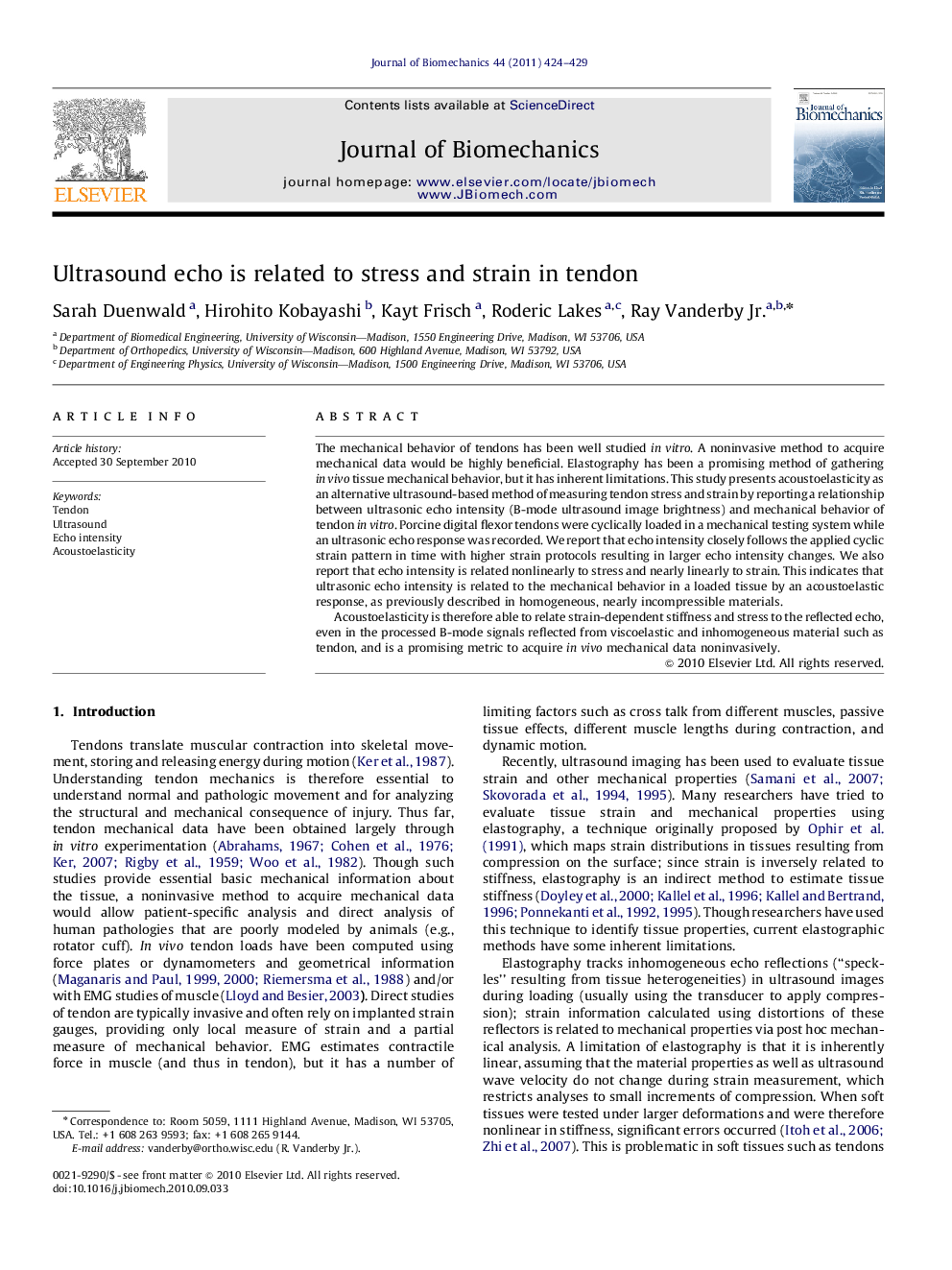| Article ID | Journal | Published Year | Pages | File Type |
|---|---|---|---|---|
| 873048 | Journal of Biomechanics | 2011 | 6 Pages |
The mechanical behavior of tendons has been well studied in vitro. A noninvasive method to acquire mechanical data would be highly beneficial. Elastography has been a promising method of gathering in vivo tissue mechanical behavior, but it has inherent limitations. This study presents acoustoelasticity as an alternative ultrasound-based method of measuring tendon stress and strain by reporting a relationship between ultrasonic echo intensity (B-mode ultrasound image brightness) and mechanical behavior of tendon in vitro. Porcine digital flexor tendons were cyclically loaded in a mechanical testing system while an ultrasonic echo response was recorded. We report that echo intensity closely follows the applied cyclic strain pattern in time with higher strain protocols resulting in larger echo intensity changes. We also report that echo intensity is related nonlinearly to stress and nearly linearly to strain. This indicates that ultrasonic echo intensity is related to the mechanical behavior in a loaded tissue by an acoustoelastic response, as previously described in homogeneous, nearly incompressible materials.Acoustoelasticity is therefore able to relate strain-dependent stiffness and stress to the reflected echo, even in the processed B-mode signals reflected from viscoelastic and inhomogeneous material such as tendon, and is a promising metric to acquire in vivo mechanical data noninvasively.
